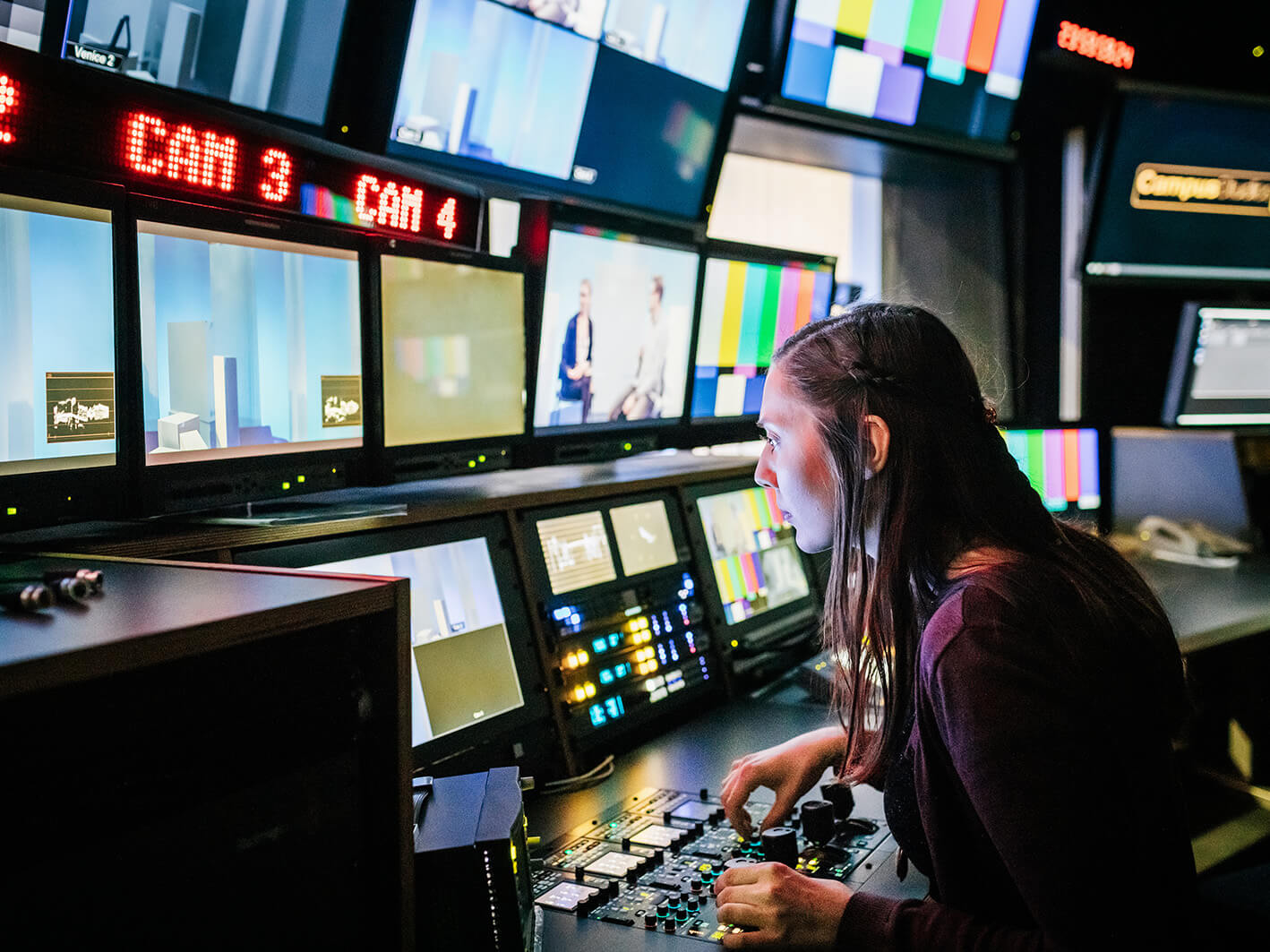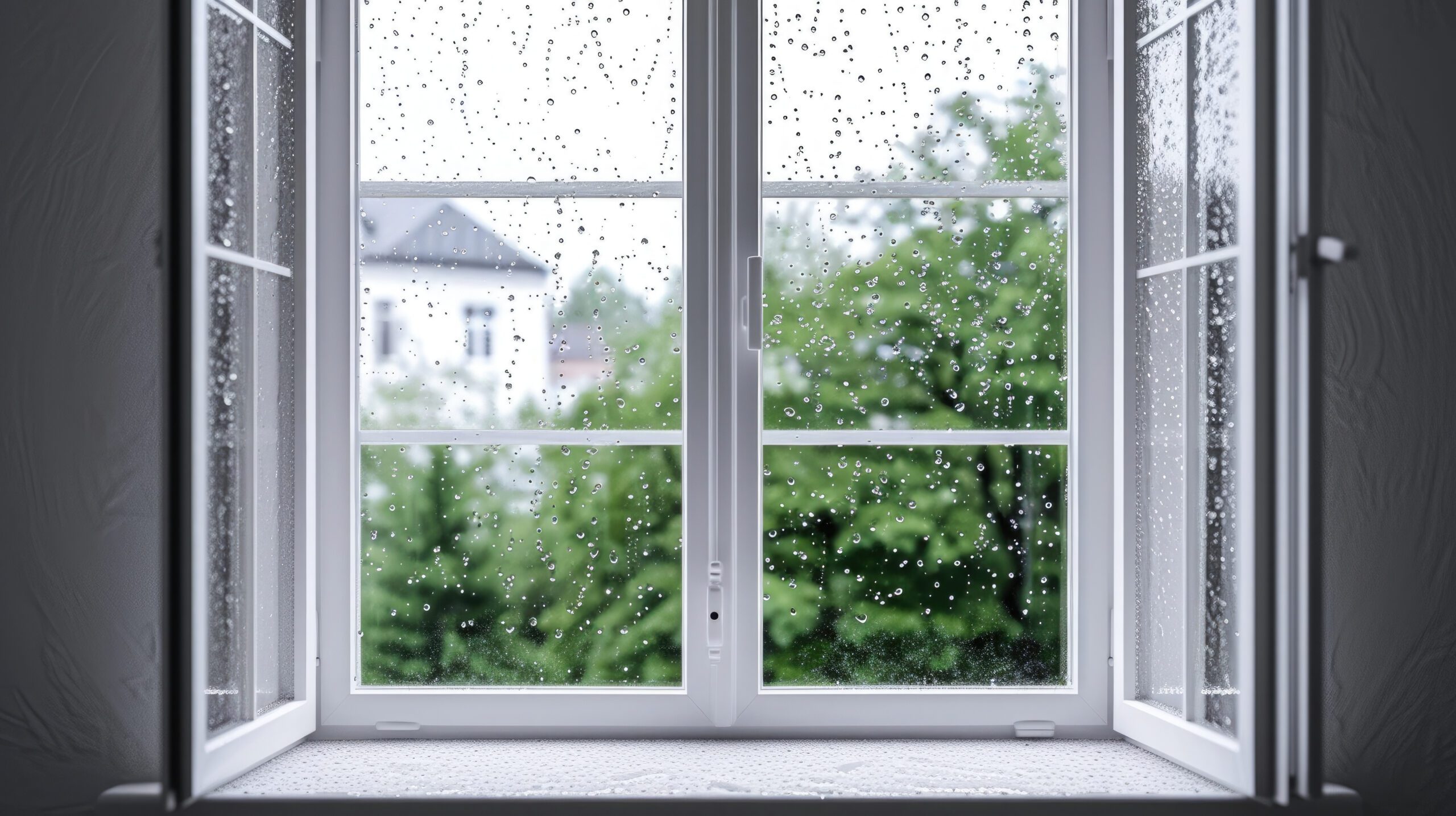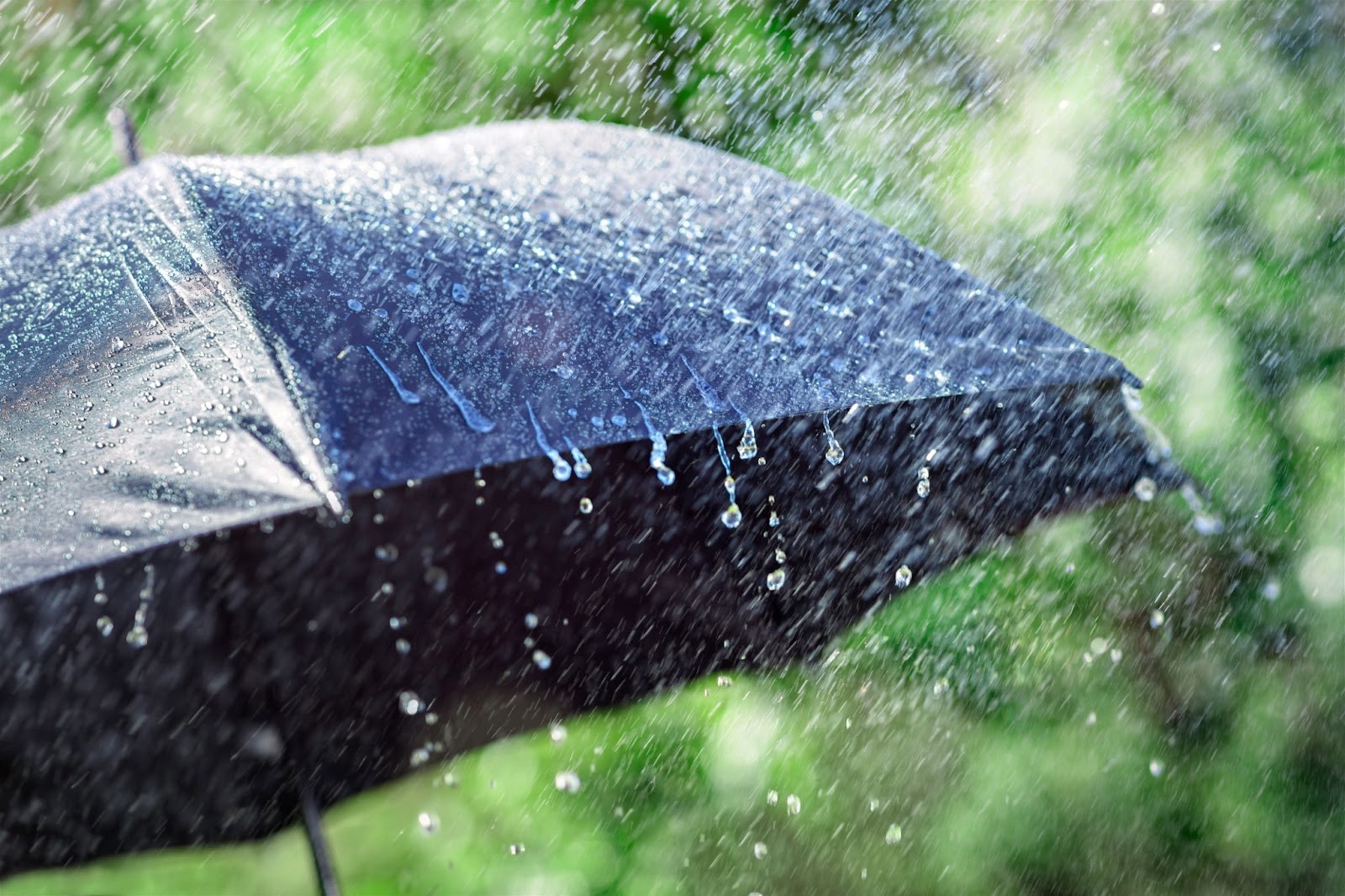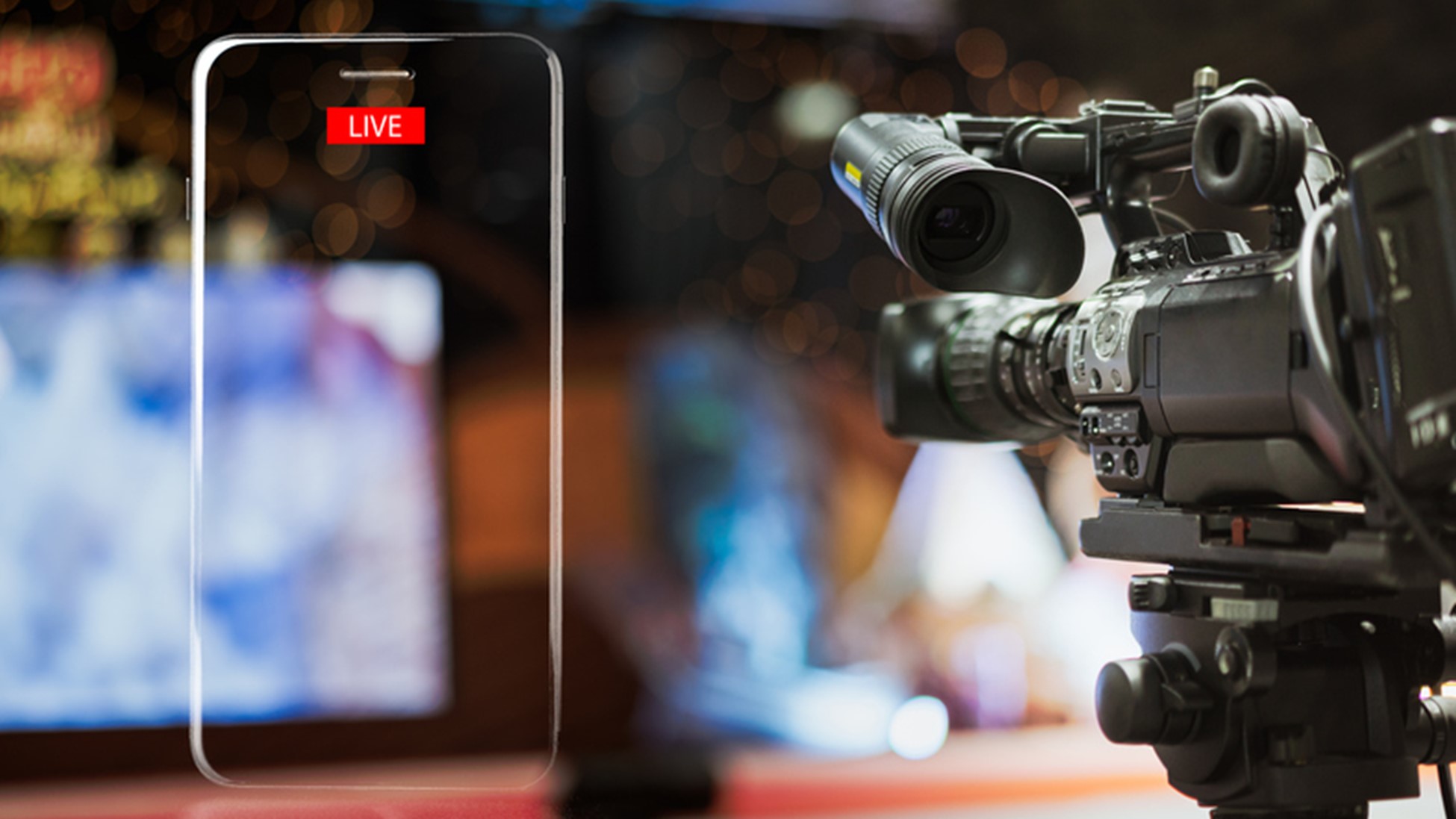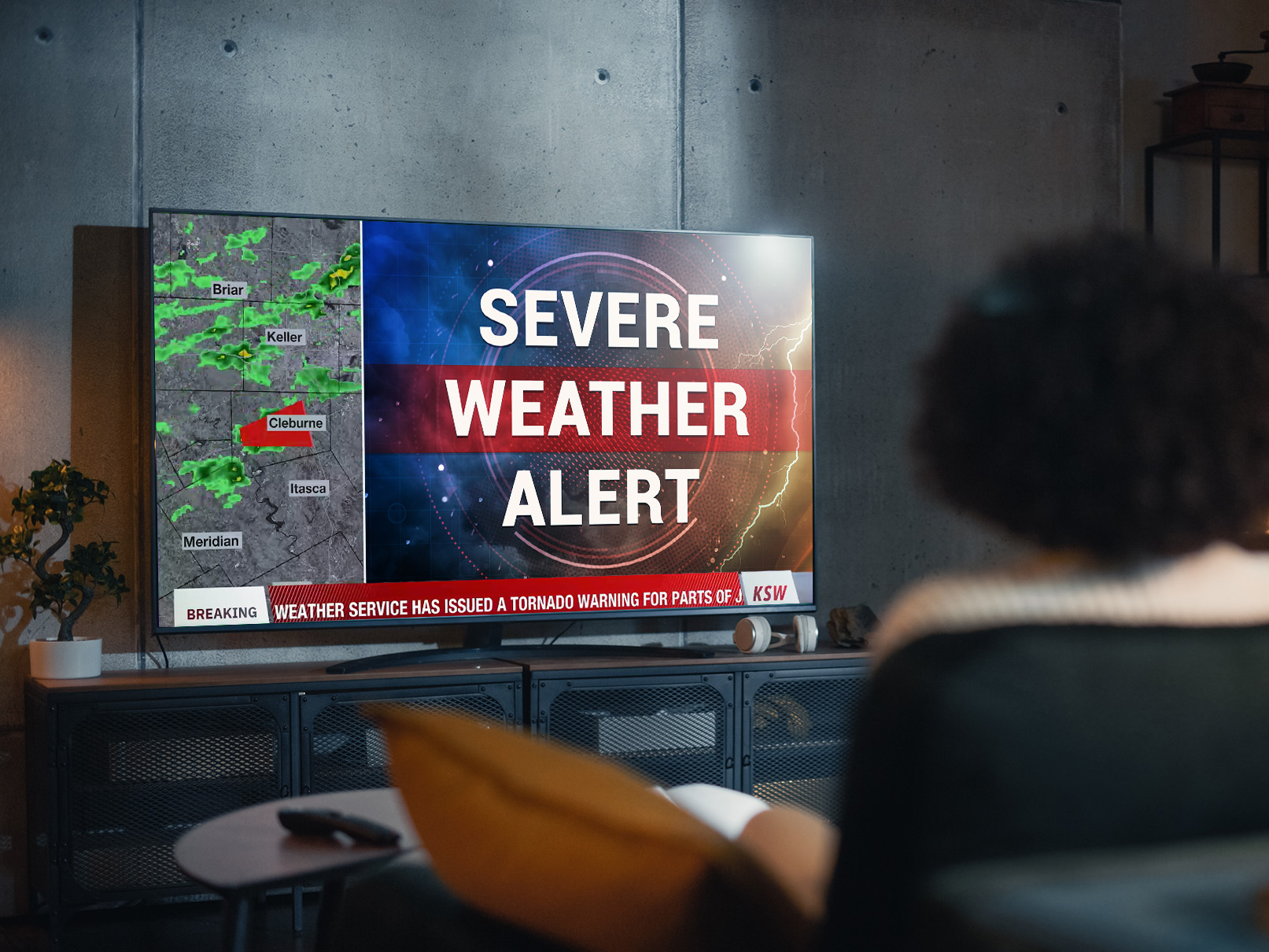Weather intelligence for the future: Crafting a strategic enterprise approach to changing environmental conditions
Continue readingWith the rapid audience shift from television to digital, staying relevant in broadcast media is challenging but necessary for long-term viability. Broadcast television is not dead—but it is evolving rapidly and there is a need to transform to avoid becoming irrelevant. Transforming means shifting from serving a TV audience to serving audiences no matter where they are—essentially, going from a TV broadcaster to an overall broadcaster.
The future of broadcast TV
According to eMarketer, forecasted TV viewing time in 2023 will continue to decline. In 2021, the average viewing time of TV was 3 hours and 17 minutes, where it is estimated to backslide to about 2 hours and 51 minutes in 2023.
According to MarketingCharts, May 2021 data from Nielsen shows that TV households were spending more time streaming than they were watching broadcast TV. In June 2022, data from Nielsen showed this trend continuing, with streaming claiming one-third of television viewing time. In November 2022, this figure rose to 38.5%. eMarketer has also estimated that by 2024, the number of these households will grow even further, reaching 46.6 million, resulting in more than a third of all U.S. households no longer having pay-TV. Although streaming does represent a large margin of all television views, it’s important to remember that the market still consumes other forms of TV. In November, broadcast represented 25.7% of viewing time, while cable accounted for 31.8%
Broadcasters must adapt to these changes to stay relevant. Identifying the key changes and emerging trends in broadcasting will help those in the industry determine how to adjust their media strategies, what tactics will most likely lead to success and how to better prepare for the future.
A look at influencers’ perspectives on future broadcast technology trends
With all of this in mind, The Weather Company asked top broadcasters for their thoughts on what trends will change the industry. Here’s what they said.
1. “Expansion into OTT delivery systems” – Tim Heller, Heller Weather
“Many TV stations are expanding their news coverage on OTT [over the top] delivery systems like Apple TV and Roku. This creates a big opportunity for local TV stations and broadcast meteorologists. Just as weather is the reason people still watch local news, it can be one of the reasons people consistently check a TV station’s streaming app.
However, OTT news content must include something more than the standard webcast. Live storm coverage along with a library of relevant pre-produced videos can keep viewers engaged, even when the weather is quiet.
I am a big advocate for Max Reality. I believe it is the best story-telling tool available to broadcast meteorologists today. But it needs to be more than eye candy. Long-form explainer scenes might not fit within the time-constrained news broadcast, but they can be customized to play forever online.”
2. “Quality and timeliness of information” – Terry Eliasen, WBZ/CBS Boston
“The broadcast media industry is changing at a rapid pace. With so much weather and news available to everyone at their fingertips, the focus will likely shift to the quality and timeliness of the information.
The most successful media outlets will be those that can deliver accurate, local and up-to-the-minute updates. For instance, weather forecasts that are as much as a few hours old and for areas too broad will likely no longer be relevant.
New innovative ways to disseminate information, like CBS News Boston, a 24-hour streaming news service, will become much more valuable. Improvements in weather technology and modeling will be vital in the pursuit of delivering the accurate, local information that people are now craving and expect.”
3. “Steady incorporation of digital platforms” – Justin Gehrts, KCRG
“The steady incorporation of digital platforms has altered workflows, and COVID really accelerated that trend. Research from Magid now shows users’ preference to get severe weather information on digital has finally reached parity with the preference for broadcast–a noteworthy change from when that was true only on quieter weather days. It’s apparent that workflows, as well as mental models, will need to pick up the pace in being truly digital-first. Instead of digital being seen as something that complements linear, the time has arrived to perhaps consider linear as a supplement to digital. Station owners will need to invest in the right training, compensation and resources (e.g. technology and staffing) to facilitate that. Otherwise, I see only a continuation of employee burnout and churn, which erodes users’ trust. Without that trust, local media loses the bedrock it needs more than ever.”
4. “More Local Programming” – Lelan Statom, News Channel 5
I believe the biggest trends will continue to be content for OTT and social platforms and more local programming on broadcast TV. The latter was a major trend this year across the country. In my market, Nashville, 3 of the 4 news stations replaced syndicated shows with local news or infotainment shows. While stations and talent seem to have a good handle on the major social media platforms, how we provide content will evolve as we continue to get a better understanding of what works best but also to adapt to the ever-changing algorithms, and we can only guess what Twitter will look like in the year ahead. Our station group, along with others, is now providing more content to OTT apps like Roku and Apple. Our station’s streaming channel was recently added to Samsung’s TV app. To keep the news consumer coming back for more, it will involve providing more unique content in addition to simulcasting live newscasts. There could be more opportunities with weather, and I do think The Weather Company has a focus on this. Many in leadership positions may want to look to see how the CBS local streaming channels are performing with more live and local content to see what can be adapted in their own markets. Internally, our company, E.W. Scripps, launched Florida 24 last year with our 5 Florida stations. It too, can provide lessons on how stations can expand their OTT offerings as consumers continue to buy more smart TVs whether or not they’re cutting the cord.”
5. “A looming recession. Increased cord cutting. And nothing but opportunity for broadcasters.” – Rodney Thompson, The Weather Company, Senior Strategist
According to Rodney Thompson, audiences are leaving linear platforms more and more often. Streaming usage has surpassed cable in July for the first time ever. This trend will only continue to increase when the looming recession causes users to switch from cable subscriptions to cheaper streaming and OTT options.
1. Make money!
OTT can be far more lucrative, which benefits your audience moving off linear. CPM rates for OTT are higher than broadcast. However, if you produce enough of the right content, you can rake in the revenue.
2. Use your competitive advantage
People can now get news as well as weather information from virtually anywhere in the world. Local broadcasters, on the other hand, offer unique regional knowledge and expertise. Pairing this expertise with trusted, recognized on-air talent creates news stories that competitors can’t match.
Weather is an effective bridge that can carry your audience from linear platforms to your OTT platform because weather is key to the audience’s viewing habits. 60% of consumers say the weather is a major reason they watch newscasts. Weather can proactively grab viewers’ attention, especially during severe conditions. Once they are on your platform, you can direct them to other news, while incorporating additional weather content between stories.
3. Your content must match the platform
When broadcasters made the transition from radio to TV, they could not simply show meteorologists speaking from behind a desk. They needed to optimize the presentation for a new medium, even if that meant utilizing chalkboards and large printed maps.
Additionally, it is not enough to just repost TV broadcasts on a digital platform. You need content that is specifically formatted for OTT and takes advantage of unique features on these platforms.
You may want to start by going straight into the forecast without any build-up to satisfy viewers who want a quick view of the weather. After the forecast, it may benefit your broadcast studio to offer information that your viewers can’t get from linear platforms. For example, you may want to consider taking around 3 minutes to explain the science behind the weather before referring viewers to another video with more information.
4. Create a content wheel
While on-air talent plays a huge role, you likely will not have enough staff to provide “always available” accurate, localized weather content. To complement your station’s personnel, you will need tools to generate a “weather content wheel”, which OTT users can use to access weather information whenever they need it.
The Weather Company provides solutions that accelerate the production of OTT content without straining resources. These include Max Cloud, Max Velocity, and Max Engage.
Broadcast media trends and technologies are constantly evolving
While the broadcast industry is constantly changing, the core value and responsibility of broadcasting remain the same—to educate and inform viewers.
I want to give a big thanks to Terry Eliasen, Justin Gehrts, Tim Heller, Lelan Statom and Rodney Thompson who provided their unique perspectives on the broadcast industry as well as key trends that will change broadcasting in the future and beyond.
With these sentiments in mind, broadcast marketers should remember that getting users the information they need is important but providing engaging and high-quality content is what allows your broadcast to resonate in the minds of viewers.
What trends do you think are most important to keep an eye on? We would love to hear your perspective on the changing environment of the broadcast industry. If you would like to learn more about keeping up with the broadcast media industry, contact us today.
Get in touch
Learn more about our weather solutions for broadcast media companies.
Contact us
